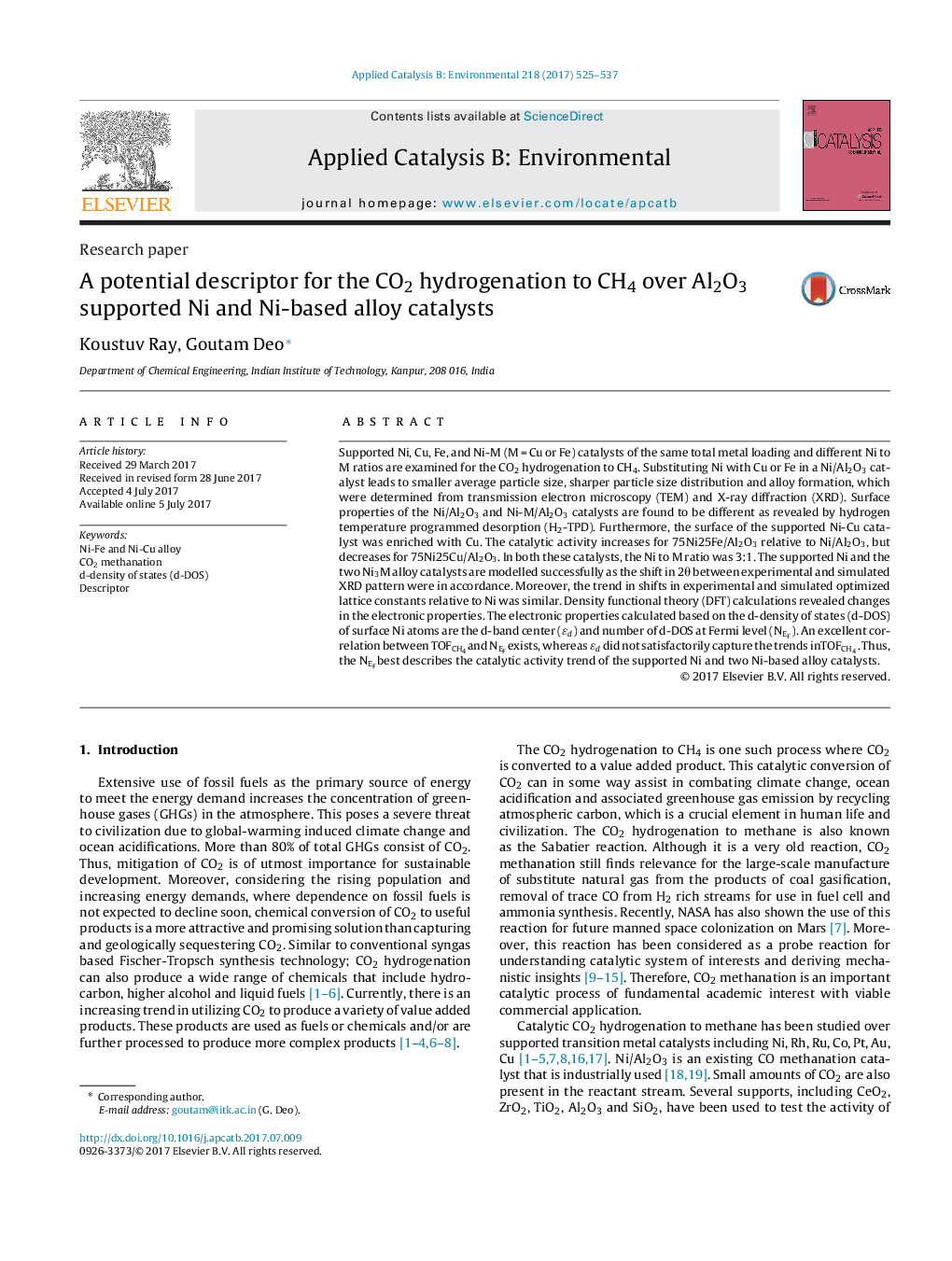| کد مقاله | کد نشریه | سال انتشار | مقاله انگلیسی | نسخه تمام متن |
|---|---|---|---|---|
| 6453793 | 1418802 | 2017 | 13 صفحه PDF | دانلود رایگان |

- Ni3M/Al2O3 (MÂ =Â Fe or Cu) possess different types (Ni3Fe and Ni1-xCux) of alloys.
- Supported Ni and Ni3Fe alloy catalysts are active for CO2 hydrogenation to CH4.
- TOFCH4 varies as Ni3Fe/Al2O3Â >Â Ni/Al2O3Â >Â Ni3Cu/Al2O3.
- Supported Ni3M alloy catalysts were successfully modelled as Ni3M alloy through DFT.
- TOFCH4 is better correlated with surface NEF than εd for Ni and Ni3M alloys.
Supported Ni, Cu, Fe, and Ni-M (M = Cu or Fe) catalysts of the same total metal loading and different Ni to M ratios are examined for the CO2 hydrogenation to CH4. Substituting Ni with Cu or Fe in a Ni/Al2O3 catalyst leads to smaller average particle size, sharper particle size distribution and alloy formation, which were determined from transmission electron microscopy (TEM) and X-ray diffraction (XRD). Surface properties of the Ni/Al2O3 and Ni-M/Al2O3 catalysts are found to be different as revealed by hydrogen temperature programmed desorption (H2-TPD). Furthermore, the surface of the supported Ni-Cu catalyst was enriched with Cu. The catalytic activity increases for 75Ni25Fe/Al2O3 relative to Ni/Al2O3, but decreases for 75Ni25Cu/Al2O3. In both these catalysts, the Ni to M ratio was 3:1. The supported Ni and the two Ni3M alloy catalysts are modelled successfully as the shift in 2θ between experimental and simulated XRD pattern were in accordance. Moreover, the trend in shifts in experimental and simulated optimized lattice constants relative to Ni was similar. Density functional theory (DFT) calculations revealed changes in the electronic properties. The electronic properties calculated based on the d-density of states (d-DOS) of surface Ni atoms are the d-band center (εd) and number of d-DOS at Fermi level (NEF). An excellent correlation between TOFCH4and NEFexists, whereas εd did not satisfactorily capture the trends inTOFCH4. Thus, the NEFbest describes the catalytic activity trend of the supported Ni and two Ni-based alloy catalysts.
129
Journal: Applied Catalysis B: Environmental - Volume 218, 5 December 2017, Pages 525-537